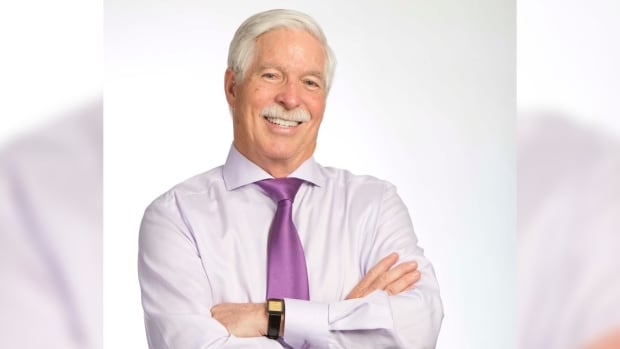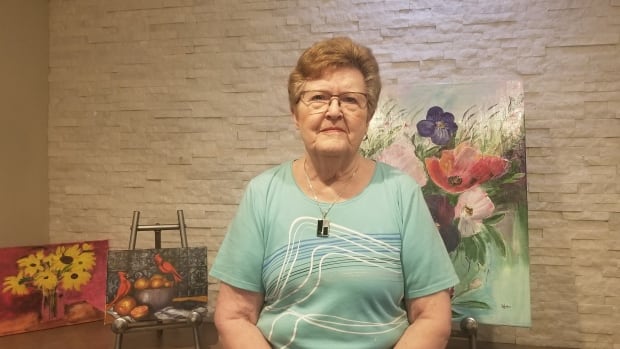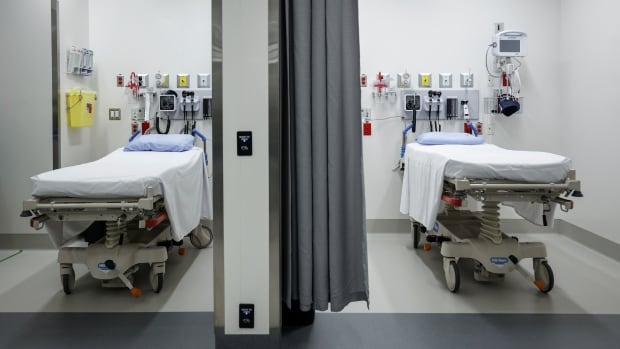Police in London, Ont., say roughly half of the drugs they seized last year were prescribed opioids, indicating they’re being diverted onto city streets.
But Deputy Chief Paul Bastien said safer opioid supply (SOS) programs aren’t the only source of drugs being diverted for other uses. He also said it’s hard to quantify how much they contribute to the redistribution of prescribed drugs because of how police find them in.
“Sometimes a drug is seized in bulk packages,” he told CBC’s London Morning on Friday. “If it’s seized in a bottle by a physician who is prescribing safe supply, that’s clearly an indication [of diversion to street use]. The bulk of what we have seized over the past several years is not found in that form.”
Police drug unit officers are finding eight-milligram tablets of Dilaudids that are prescribed as part of safer supply —tested and controlled opioids prescribed to people with narcotic addictions. Dilaudids are a brand of hydromorphone, an opioid to treat severe chronic pain and help with management of physical and psychological withdrawal symptoms.
In the last five years, there has been a 3,000 per cent increase in all forms of hydromorphone tablets seized in London. They include but aren’t limited to Dilaudid, said Bastien.
In 2019, police seized just under 1,000 tablets, with triple that number in 2020. While there were minor increments over the pandemic years, police seized approximately 30,000 hydromorphone pills in 2023.
Dilaudids made up roughly 15,000 of the hydromorphone police seized in 2023 — Bastien believes that’s an unintended consequence of SOS, he said.

“We recognize the value that safe supply plays as part of that harm reduction piece, but diversion is an important issue that is affecting community safety. I won’t say that everyone’s doing it, but some of the tablets from safe supply are being diverted for that purpose.
“Criminal groups are fairly adept at exploiting policy changes that are well intended, but unforeseen consequences sometimes arise and this appears to be, at least in part, one of them,” added Bastien.
Strict protocols against diversion, SOS program says
The safe supply program in London started in 2016 and is Canada’s longest-running safe supply program, currently serving 276 patients. This March, Ottawa gave the program an additional $1.7 million, extending its lifeline for another year.
It’s run by the London InterCommunity Health Centre, where doctors prescribe controlled and tested opioids to patients with the intention of preventing them from resorting to toxic street drugs.
The clinic has strict protocols against diversion of all prescribed narcotics. They include weekly client check-ins, toxicology tests at every appointment, and removal from the program if diversion is proved, said Greg Nash, its director of complex urban health.
“There’s always a risk of medication being diverted, especially narcotics,” he said. “Unfortunately, diversion can’t be prevented — it happens across the spectrum of medications.”
Nash said there have been a number of people removed from the SOS program within the last year, but couldn’t give specifics due to patient confidentiality.
Dilaudids found on the streets can come from any source, including pharmacies. But since the tablets aren’t clearly marked, it’s hard to pinpoint where exactly they come from, said Bastien.
Concerns over diversion of prescription drugs have also been raised elsewhere in Canada.
A CBC News investigation last month found about $4 million worth of hydromorphone tablets went missing from an Ontario pharmacy, with no word on where they went.
After Alberta Premier Danielle Smith criticized British Columbia’s safe supply program, the RCMP said in March there was no evidence of safe supply drugs being diverted in B.C.
Nash said toxic drugs have become more potent since the pandemic and its volume far exceeds what safe supply prescribes. London police have noticed Dilaudids are being used as currency for people to access other drugs like fentanyl, they said.
“It’s estimated that safe supply prescribing practices across the country make up less than a single-digit percentage of the total prescription of hydromorphone, so that includes pain management, cancer care and addictions treatment,” said Nash.
“Diversion is caused because there’s a need in our community that is not being met. The only way people get it met is through the unregulated black market and the access to toxic drug supply, we need to provide an alternative for folks.”
London police will hold a news conference this week to share more about their strategy to combat diversion.






